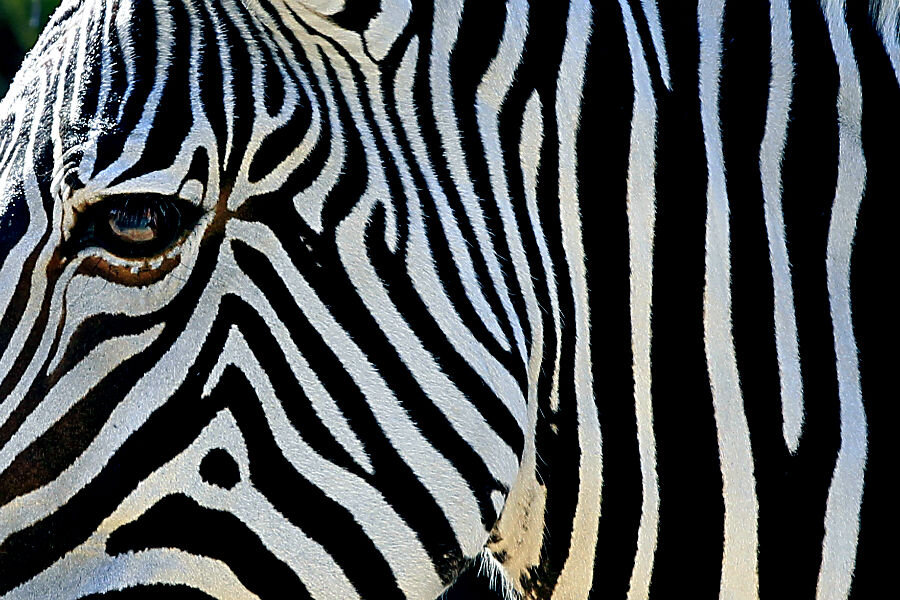Why do zebras have stripes? It's not for camouflage, say scientists.
Loading...
Zebras’ stripes are highly unlikely to have evolved in an effort to provide camouflage, according to new research published Friday in the journal PLOS ONE.
The purpose of zebras’ stripes has long been a mystery, with various hypotheses put forward, including “confusing predators, protecting against disease-carrying insects, controlling body temperature and social cohesion”.
But with the most longstanding of these, predator avoidance, now being rejected, what alternative explanations hold any credence?
The new research says that zebra stripes cannot have evolved to blend the beasts into the background, nor to break up their outline, because at the distance where the stripes become visible to predators, they have likely already seen or smelled the zebra.
“The results from this new study provide no support at all for the idea that the zebra’s stripes provide some type of anti-predator camouflaging effect,” said co-author Tim Caro, UC Davis wildlife biology professor.
“Instead, we reject this long-standing hypothesis that was debated by Charles Darwin and Alfred Russell Wallace.”
To test the hypothesis that zebra stripes do indeed provide camouflage, the researchers took digital images taken in the field in Tanzania and passed them through spatial and color filters, simulating how zebras’ main predators, lions and hyenas, as well as zebras themselves, would perceive the stripes.
In addition, they measured the stripes’ width and contrast, which, along with knowledge of various animals’ visual capabilities, allowed them to draw conclusions as to how far away lions, hyenas and zebras could be, while still detecting stripes.
“The most longstanding hypothesis for zebra striping is crypsis, or camouflaging, but until now the question has always been framed through human eyes,” said lead author Amanda Melin, assistant professor of biological anthropology at the University of Calgary, Canada.
“We, instead, carried out a series of calculations through which we were able to estimate the distances at which lions and spotted hyenas, as well as zebras, can see zebra stripes under daylight, twilight, or during a moonless night.”
Results from the work indicate that beyond 50 meters (about 164 feet) in daylight or 30 meters (about 98 feet) at twilight, when most predators hunt, the stripes are difficult for large carnivores to distinguish. On moonless nights, the distance drops to a mere 9 meters (about 29 feet).
In addition, the research concluded that on open plains, where zebras spend most of their time, lions could see the outline of zebras just as easily as that of similar-sized prey with fairly solid shading patterns.
If the conclusions of this research are correct, and stripes confer no advantage against predation, where did the idea come from, and is there any evidence to support it?
“The idea that stripes allowed zebras to blend into a background composed of tall stem enriched grasses is an old one that emerged from casual observations,” says leading zebra expert Daniel Rubenstein of Princeton University, in an email interview with The Christian Science Monitor. “Until this study most evidence in support of this hypothesis has been anecdotal”.
What about the stripes helping zebras recognize each other from a distance, conferring some kind of social advantage?
According to the study, that hypothesis is out, too. While zebras can see the stripes a little further away than can their predators, other closely related animals who bear no such markings and are highly social are also able to distinguish individuals of their species.
So, where does this leave us? What are other possible explanations for the stripes of these iconic animals?
One hypothesis, supported by research of UCLA’s Brenda Larison et al. published in January 2015, suggests that “temperature successfully predicts a substantial amount of the stripe pattern variation observed in plains zebra”.
Exactly what the correlation between temperature and striping is, however, the researchers felt unable to determine, so complex is the relationship, so many factors at work.
There is also research in support of zebras’ stripes helping to deter biting flies. In fact, Dr. Rubenstein says that some as yet unpublished research lends even more support to this theory.
“And lastly, moving zebras are thought to dazzle and confuse attacking predators in part by creating optical illusions”, says Rubenstein. “So far support for this hypothesis is mixed and has come mostly from computer studies in which human subjects attempt to hit striped and unstriped moving objects.”
“Clearly, more study is needed to evaluate the relative importance of each of these alternatives.”







